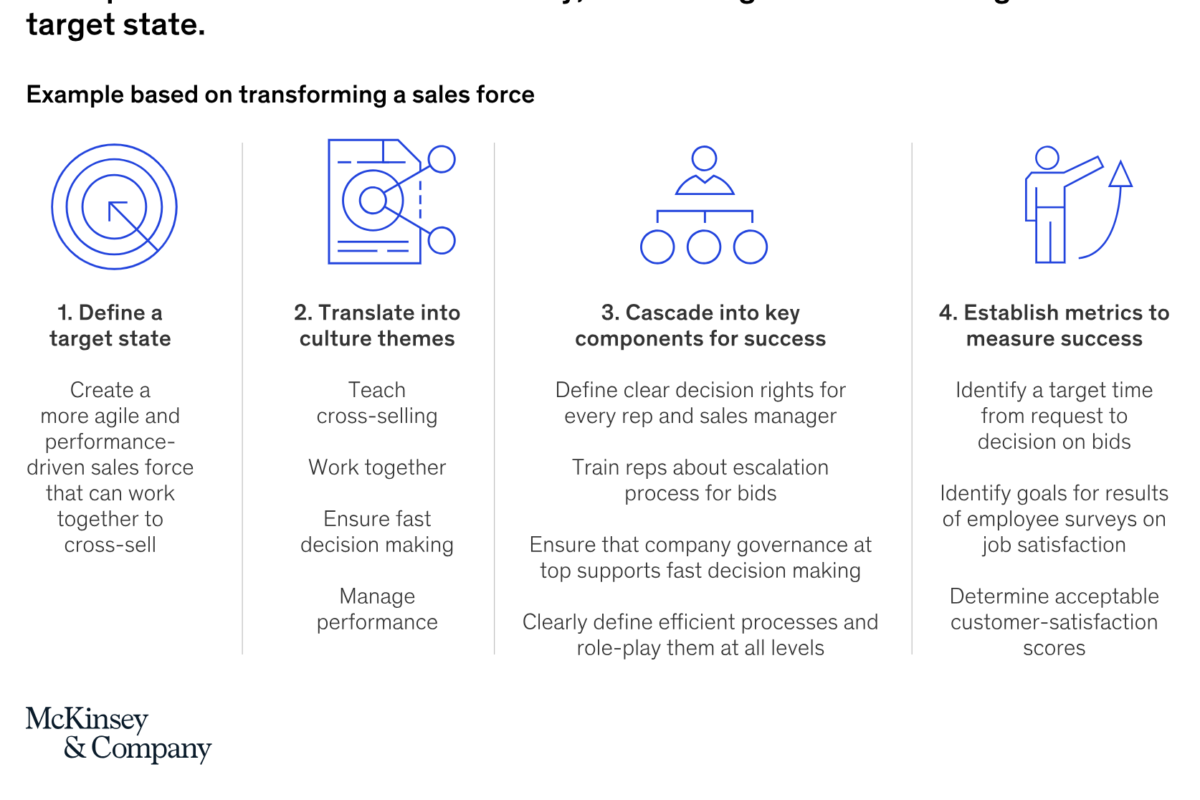In this insightful article about the importance of culture for successful mergers from McKinsey & Co https://www.mckinsey.com/business-functions/organization/our-insights/organizational-culture-in-mergers-addressing-the-unseen-forces?cid=other-eml-alt-mip-mck&hlkid=651be099a6b54caf942562ea7c3aec8f&hctky=2735784&hdpid=2cd02b13-7408-480e-950d-079ab5a0e4fc the authors address the fact that although most leaders are aware that taking culture into account during a merger is critical, the reality is that often times leaders don’t actually follow suit, resulting in poor results and a lack of cultural cohesion and alignment after the integration. Establishing a clear understanding of the cultures of both companies undergoing a merger prior to the merger taking place is of utmost importance. Beverly Goulet, former Executive Vice President and Chief Integration Officer at American Airlines stated from her experience, “One thing I wish we had done was [to create] a culture diagnostic right at the start of our planning process. That would have eliminated some of the misperceptions about both company cultures. It would have established an objective set of criteria around which we could have had conversations based on facts rather than just anecdotes or beliefs.” In order to help organizations avoid this pitfall, the article provides three key steps for understanding and managing culture during a merger.
Step 1: Diagnose how work gets done
It is important to understand management practices and working norms of both companies. For example, what are their procedures for decision making, motivating employees, and enforcing accountability? Utilizing a combination of surveys and one-on-one interviews is recommended for a holistic assessment and understanding. For further information about these two methods, visit our recent article https://avionconsulting.com/2019/05/360-degree-interview-based-feedback-vs-online-survey-based-feedback/.
Step 2: Set Priorities
Once the cultural diagnostic is established, priorities can be set to maximize the value of the deal by determining which cultural aspects should be emphasized, and where it is important to maintain but manage meaningful differences that when combined can result in a higher performing organization. At this point, the leadership team agrees on the desired behaviors and follow up with a comprehensive change plan structured around cultural themes. It is important that the leaders also drive all initiatives rather than delegating them.
Step 3: Hard-wire and support change
Once the important themes and initiatives have been identified, they can be integrated into the new company’s operating model and daily practices. “The redesign of policies, processes, and governance models must reflect these important cultural aspects if change is to stick. For example, nurturing a culture of respect might be reflected in company policy and values statements. To manage cultural integration properly, the merger team must also ensure that the right messages and behavior cascade throughout the new company. By identifying the most influential employees, leaders can recruit them as change agents and give them the training and skills they need to be effective in this role. This would include instruction in how to communicate the change story and how to role-model the behavior required in the influencers’ parts of the business.”
In conclusion, it has been shown that new companies resulting from mergers that have aligned corporate cultures and strong organizational health deliver three times the shareholder returns of those whose cultures are not closely linked. At Avion Consulting we emphasize understanding and alignment of cultures for our client organizations who are considering mergers. Have you been through a merger with your organization, and if so, how important was it to address culture within the two organizations before, during, and after the integration? We invite you to join the #AvionConsulting newsletter for further discussion at http://bit.ly/AvionNews.



